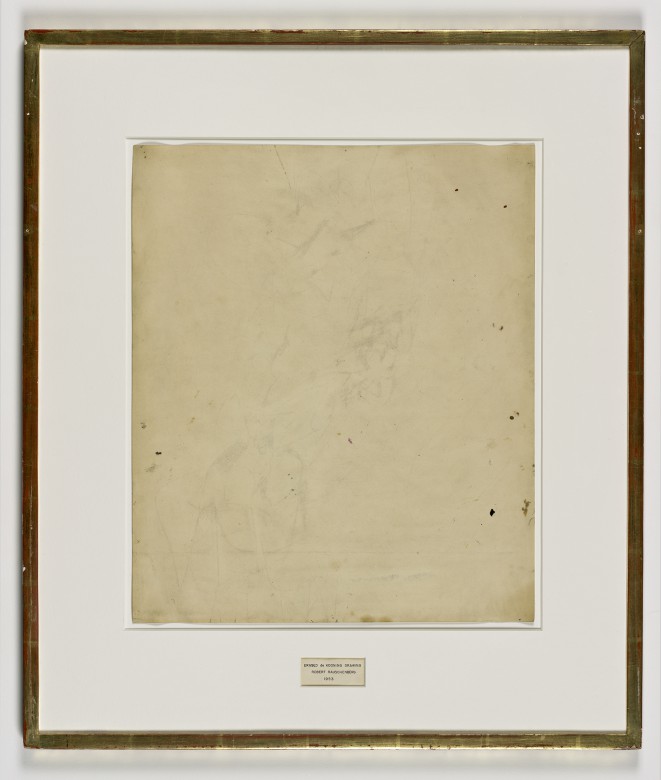
Information
Information
Can one artwork be created through the erasure of another? In the early 1950s, Robert Rauschenberg (1925–2008) asked the artist Willem de Kooning for a drawing. Over the course of a month in 1953, Rauschenberg erased much of de Kooning’s image, with his permission, leaving only trace pencil lines of the original work. Rauschenberg then rematted and framed the image and asked his friend Jasper Johns to add a simple inscription below: “Erased de Kooning Drawing / Robert Rauschenberg / 1953.” The unmaking of one work not only challenges the notion of artistic authorship, but it also offers a new way of seeing the original drawing. The viewer experiences how the erasure of pencil lines and the attempt to establish a perceptual visual nothingness can transform a process of negation into a process of creation. Similarly, in Paik’s Zen for Film, the imprint of time has a positive value: it inverts the relationship between transparency, which enables seeing, and the loss of transparency, which imbues what is being seen (or what is becoming less visible and more opaque) with another quality. Alteration, the loss of transparency, and decay may themselves contribute to a highly aesthetic experience of an artwork. —AG
Image: San Francisco Museum of Modern Art, Purchase through a gift of Phyllis C. Wattis, 98.298. © Robert Rauschenberg Foundation / Licensed by VAGA, New York, NY.